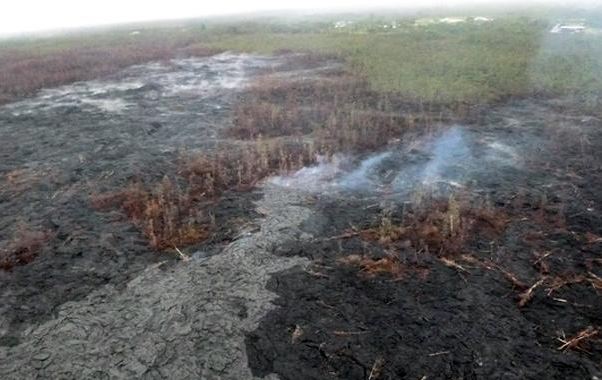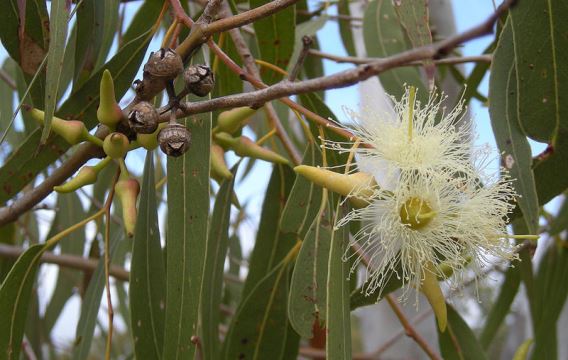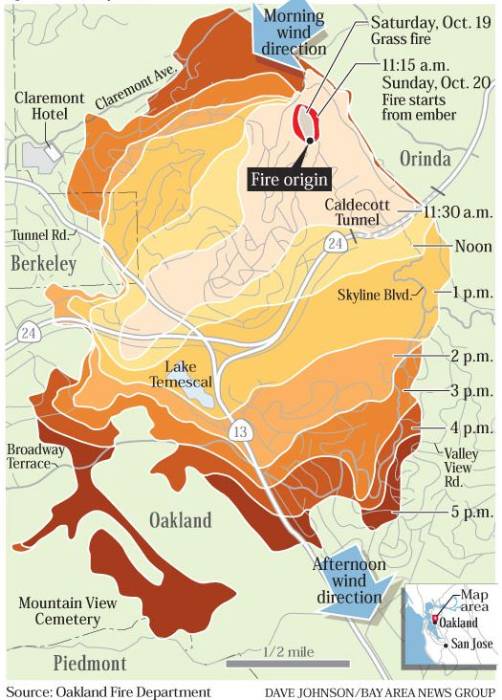Lava from Hawaii volcano continues to spread

Lava from the Kīlauea volcano above Pahoa in Hawaii continues to spread, occasionally igniting the vegetation. The latest breakout is about 0.7 miles upslope of Highway 130, officials from the Hawaii County Civil Defense said after a helicopter flight Tuesday morning. Over the last four days the lava has advanced about 240 yards.
Three additional deceased hotshots to qualify for benefits
Decisions by the City of Prescott, the courts, and the Prescott Public Safety Retirement Board have resulted in the families of three additional members of the Granite Mountain Hotshots being approved to receive public safety survivor benefits. In 2013, 19 members of the crew were killed on the Yarnell Hill Fire south of Prescott, Arizona. Initially only six of the men were classified as full-time, permanent employees and deemed eligible for full benefits. More information is at AZcentral.
Group opposes FEMA’s plan to reduce hazardous fuel near Oakland, California
The Hills Conservation Network has sued several organizations in an attempt to halt a project that would reduce the hazardous fuels over 2,059 acres in the East Bay area. Below is an excerpt from Courthouse News Service:
“(C)lear-cutting and chipping of eucalyptus will not achieve the most effective reduction of fire risks in the project areas and instead increases fire risks by disposing of wood chips in layers up to two-feet deep over extensive areas of the project sites,” the complaint states.
But FEMA’s environmental impact statement, which justifies depositing up to 24 inches of mulch from eucalyptus trees, “fails to acknowledge research that highlights the high potential for spontaneous combustion in deeper accumulations of mulch, the difficulty of fire suppression in such fuels, the severe long-term damage to soils by the intense heating in mulch and wood chip fires, and the documented spotting danger posed by mulch and other forms of masticated fuels,” the group says.
“The net effect is essentially trading one fire hazard for another.”
Eucalyptus trees actually help reduce fire hazard by breaking up strong winds and reducing hazard from flying embers, and the complete removal of the eucalyptus forest would constitute a “catastrophic site disturbance” that would open up the ecosystem to invasive species, according to the lawsuit.
Last year we wrote this about eucalyptus trees:
Wildland firefighters in Australia and in some areas of California are very familiar with eucalyptus trees. They are native and very common in Australia and are planted as ornamentals in the United States. The leaves produce a volatile highly combustible oil, and the ground beneath the trees is covered with large amounts of litter which is high in phenolics, preventing its breakdown by fungi. Wildfires burn rapidly under them and through the tree crowns. It has been estimated that other than the 3,000+ homes that burned in the 1991 Oakland Hills Fire in California, about 70 percent of the energy released was through the combustion of eucalyptus.
Florida wildland firefighters concerned about their pay
Below is an excerpt from NBC 2:
Firefighters with the Florida Forest Service are fired up over small wages. They’re making a plea to state leaders to correct what they describe as being “grossly underpaid.”
[…]
Experience – now one the areas of concern being pointed out by a local union representing some of the firefighters with the Florida Forest Service.
“We do see a fairly high rate of turnover because of that,” said Chris Schmiege, Lee County Forest Area Supervisor.
“That”- being low salaries- in a job wage survey conducted by the union- it states Wildland firefighters receive a starting wage of a little more than twenty-four thousand a year for full-time work.
An amount comparable to a cafeteria worker or plumbers assistant which is considerably less than the average for firefighters at the county and local level, amounts ranging from thirty-nine to sixty thousand a year.
Forest Service officials are now calling on help from state leaders.
“We can definitely use the help, but at the same time we’re doing what we’re doing,” said Schmiege.
Which according to Schmiege also includes going out West to work for other federal fire agencies to stay afloat financially. Right now officials say it’s really almost a labor of love.





